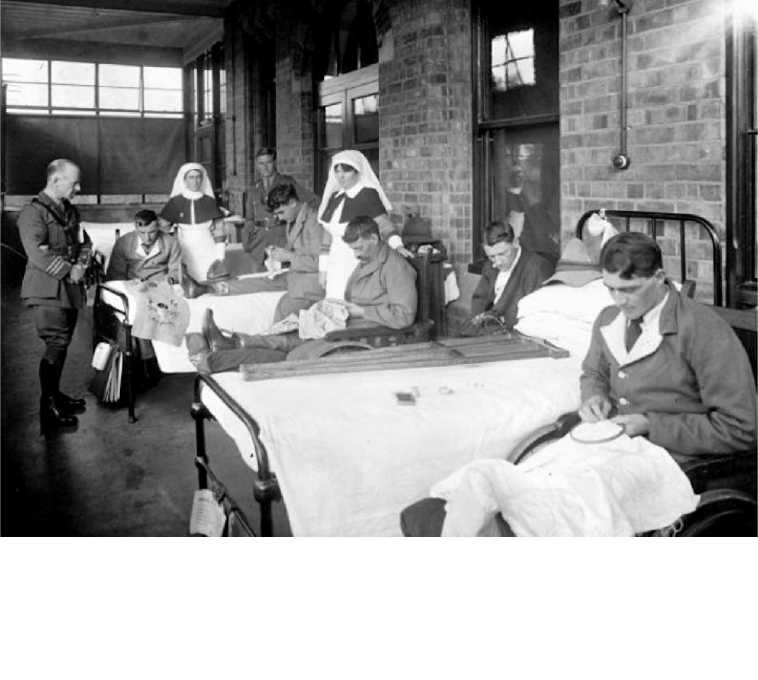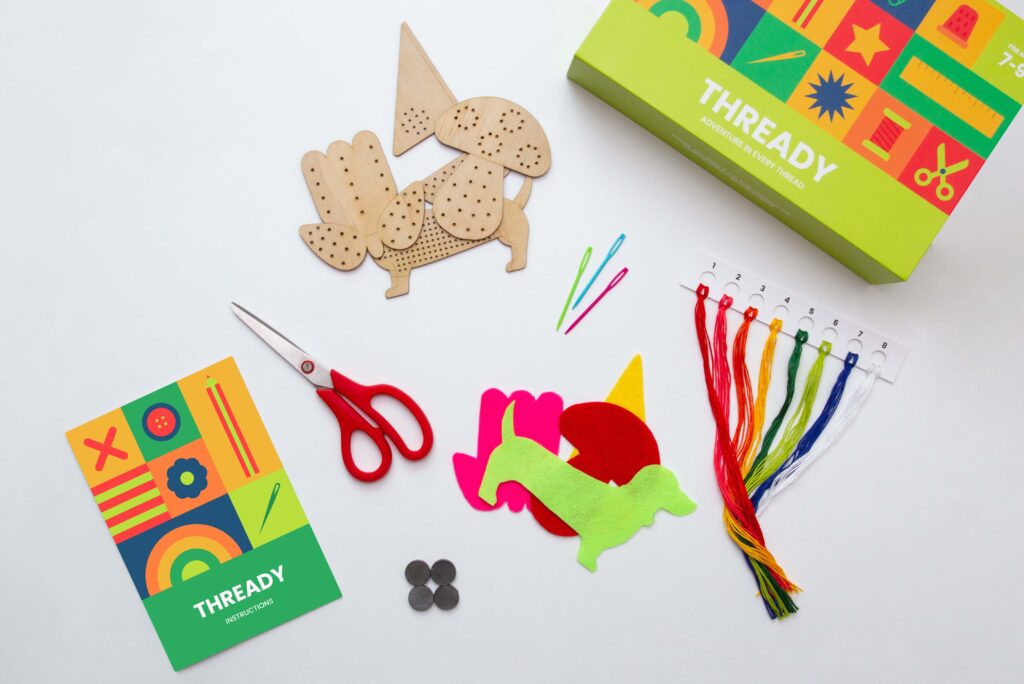HOW EMBROIDERY CAN BENEFIT MY CHILD?

WHAT’S UP WITH EMBROIDERY?
With the recent coronavirus lockdowns, people
have been trying to find ways to spend time at
home and help their mental state in such a
difficult time. That included looking for new
hobbies that can fill their day. Embroidery was
one of them. A few reasons behind that are the
factS that embroidery can benefit your mental
health in a way of relieving stress and anxiety,
help with concentration, and calm your mind.
A GLIMPSE INTO HISTORY
“The link between mental health and stitching is
not a new discovery. Historically, stitching has
helped varying demographics in a range of
circumstances overcome or ease psychological
trauma. For example, First world war veterans in
the UK, Australia, and New Zealand practiced
needlework as a form of therapy for shell shock.”

WHAT ABOUT KIDS?
1.
Arts and crafts, including embroidery can be very
beneficial to them in the early years. It develops
lifelong skills, such as coordination, creative
thinking, fine motor skills, and concentration.
2.
Kids can learn transferrable skills, such as sewing
and stitching skills while using their imagination
to be creative. Every embroidery project requires
planning, for example, what fabric, colours, and
needles to choose, and this is a soft skill any child
needs to develop at an early age. Embroidery
also enhances manual dexterity
3.
Teaching kids embroidery can be beneficial in
easing their way into adulthood. Embroidery
teaches patience, as well as allows to feel a sense
of achievement when the project is completed.
This strengthens kids’ emotional intelligence and
self-esteem.
In that sense, embroidery checks all the boxes, since it scratches the creative itch while also developing emotional and academic capabilities and shaping children into becoming well-rounded adults.”
STATISTICS
Developmental disabilities occur among all
racial, ethnic, and socioeconomic groups. Recent
estimates in the United States show that about
one in six, or about 17%, of children aged 3
through 17 years have one or more
developmental disabilities, such as:
– ADHD,
– autism spectrum disorder,
– cerebral palsy,
– hearing loss,
– intellectual disability,
– learning disability,
– vision impairment,
– and other developmental delays.
– ADHD,
– autism spectrum disorder,
– cerebral palsy,
– hearing loss,
– intellectual disability,
– learning disability,
– vision impairment,
– and other developmental delays.
IN CANADA
In 2006, 44.8% of children aged 5 to 14 reported a
speech disability, making it the third most
prevalent disability among this age group
Other commonly reported disabilities among school-aged children were: psychological disabilities (34.5%) developmental (30.7%) and agility-related disabilities (21.3%).
Other commonly reported disabilities among school-aged children were: psychological disabilities (34.5%) developmental (30.7%) and agility-related disabilities (21.3%).
LASTLY
According to the study “Improving the Fine Motor
Skills with Embroidery among Children with an
Intellectual Disability” done by Syiddatul Budury,
Khamida Khamida, Siti Nurjanah, and Triana
Jamaliah Jalaluddin, they discovered that most
children after embroidery LESSONS had enough
fine motor skills (84.6%). The students improved
their fine motor ability such as how they
colouring, scissoring, grasping, and holding up a
paper. The conclusion of this study is that there
was an effect of embroidery therapy on fine
motor skills in children with intellectual
disabilities.

HERE COMES THREADY!
Here at Thready, our goal is to aid kids with
disabilities, as well as any other kids in acquiring
hands-on experiences and soft skills that can be
transferred to adult life and to make embroidery
appealing to kids in the age of technology.